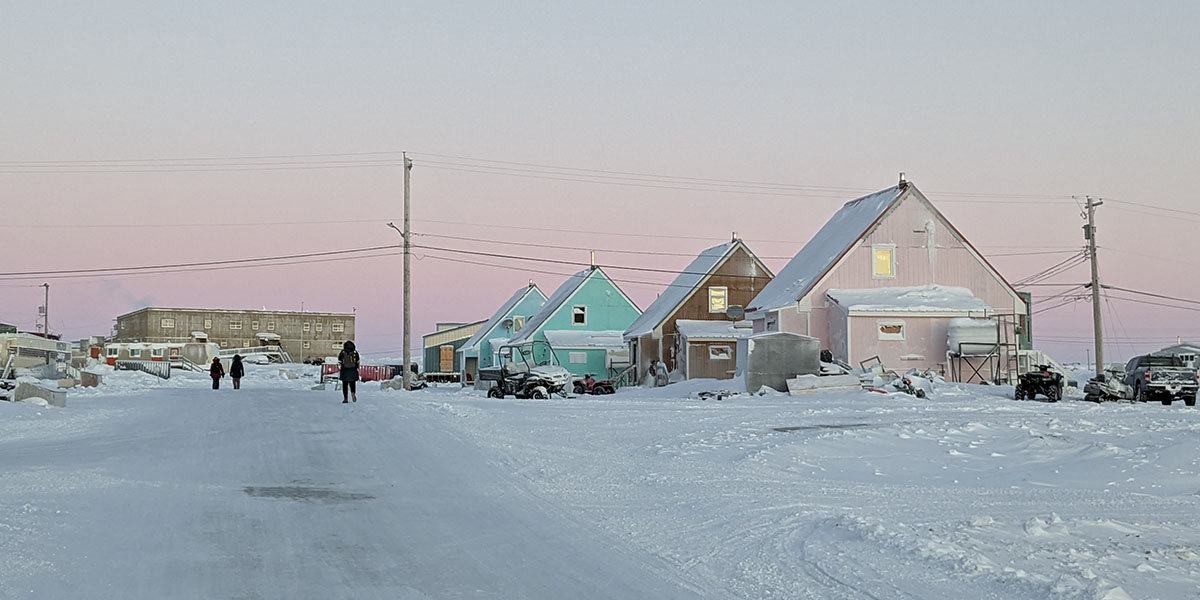
September 25, 2023
By: Talha Awan and Michael Twigg
This past January, our visit to Taloyoak, Nunavut — the northernmost community on the Canadian mainland — coincided with the end of polar night and the sun’s return to the horizon. We visited the town with our colleagues and project funders at WWF-Canada to learn from community leaders about their vision for developing a local ‘blue conservation economy’. This post previews what we learned about marine conservation-based economies and their benefits to northern communities.
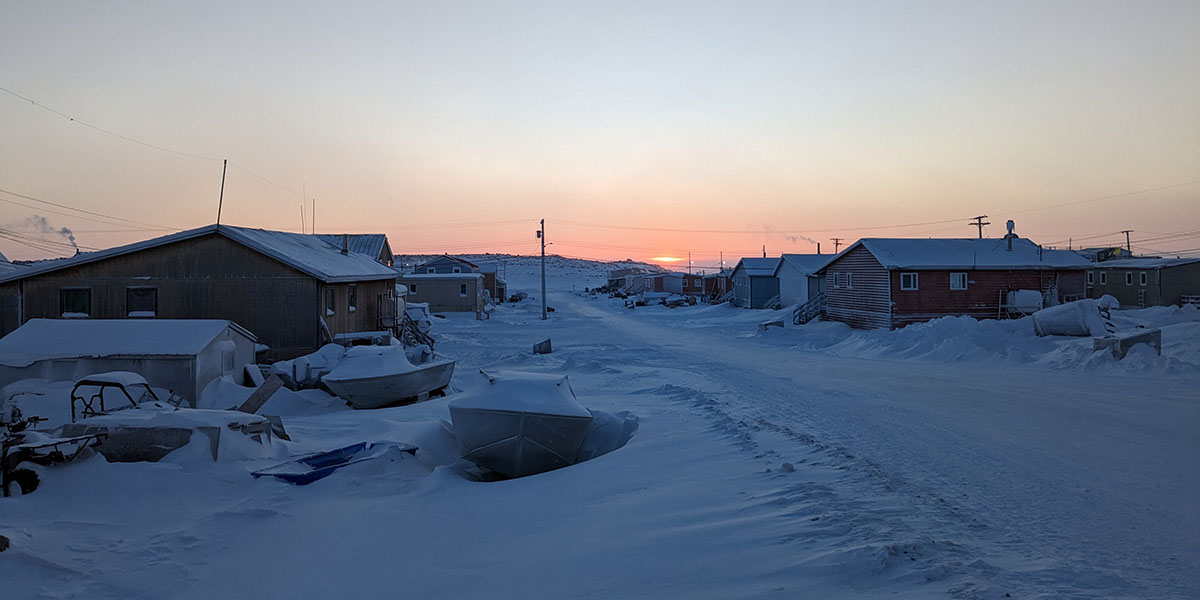
“The return of the sun” — the sun’s disc peering above the horizon for the first time in over a month. (Photo credit: Talha Awan, Smart Prosperity Institute)
The Hamlet of Taloyoak, home to close to 1,000 people, is on the southwestern coast of the Boothia Peninsula, locally known as Aviqtuuq. Taloyoak means “large caribou blind” in Inuktitut, referring to the nearby migratory route of caribou that come to their calving ground in Aviqtuuq every summer.
Today, community leaders want to connect Aviqtuuq’s land and marine-based conservation efforts (see the Aviqtuuq Inuit Protected and Conserved Area (IPCA) project) with local economic development to address the community’s need for access to nutritious food, employment opportunities, and to protect Inuit traditional knowledge, culture, and language.
During our visit we spoke to board members of the Taloyoak Umarulirijigut Association (TUA; formerly known as the Spence Bay Hunters and Trappers Association), local Inuit Guardians, and other community leaders to understand how investing in marine conservation could help grow the local economy. What we found was a local vision for a conservation economy that meets the needs of the local community as summarized by Jimmy Ullikatalik, manager of the TUA and the Aviqtuuq IPCA project, “what we need is a social enterprise — people helping people.”

George Aklah, Vice Chairperson of the Taloyoak Umarulirijigut Association carries a piece of ice that has been harvested to be brought back to Elders in the community as a source of potable water. (Photo credit: Talha Awan, Smart Prosperity Institute)
“Country food is our main diet, and [country food processing] makes common sense to people in Nunavut.”
Aviqtuuq is the geographic base for Taloyoak’s country food economy, which generates $6.6 million a year from the harvesting of nutritious country food, including caribou, muskox, seal, and Arctic char. Despite the importance of country food to the local economy, participation has become too much of a risk for many community members. Low wages and the high cost of hunting materials mean that many in Taloyoak are relying on less nutritious, subsidized store-bought foods. The TUA is working with ArctiConnexion to establish Niqihaqut (“our food” in Inuktitut), a cut-and-wrap facility that will collect, prepare, and distribute food to the community. The facility aims to improve access to nutritious food, while generating $1.9 million in annual revenues and creating a number of local, culturally relevant jobs.
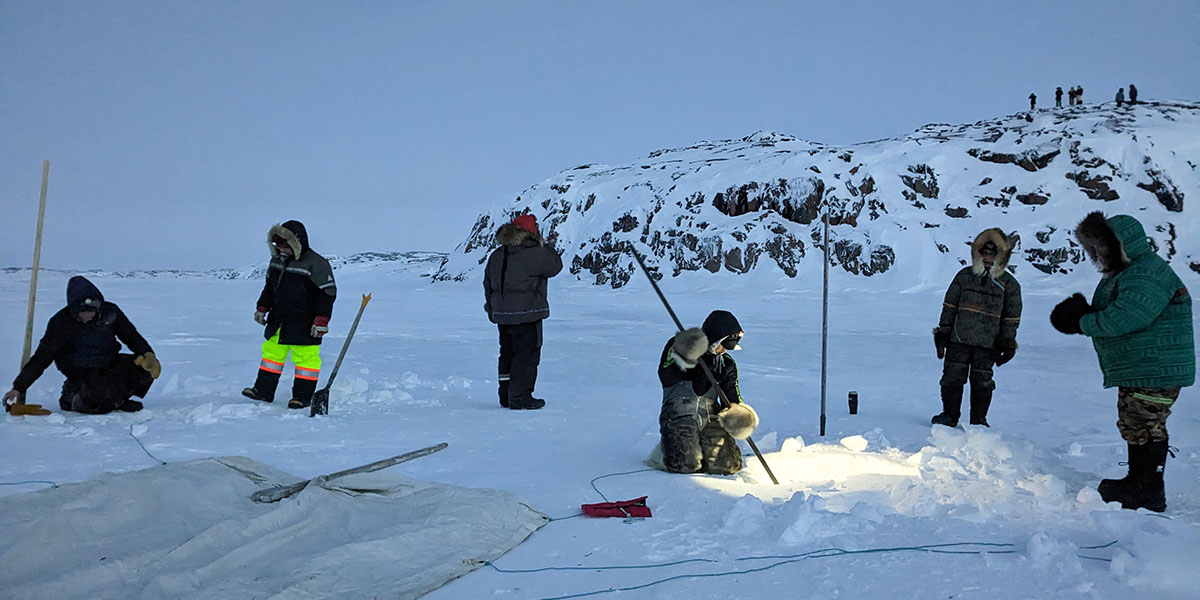
Aviqtuuq Guardians conduct an igloo-making demonstration. (Photo credit: Talha Awan, Smart Prosperity Institute)
“Those young men are happy, and their families are happy.”
Aviqtuuq Guardians are responsible for managing key coastal ecosystems at the center of the local conservation economy. The program helps provide better access to nutritious food and more job opportunities in Taloyoak. It also connects youth with Elders and facilitates the transmission of traditional knowledge. Investments in Guardians programs are estimated to generate more than a twofold return for every dollar of investment. Since its inception, the Aviqtuuq Guardians program has generated $12 million in community co-benefits in addition to creating job opportunities valued at $1.3 million a year.
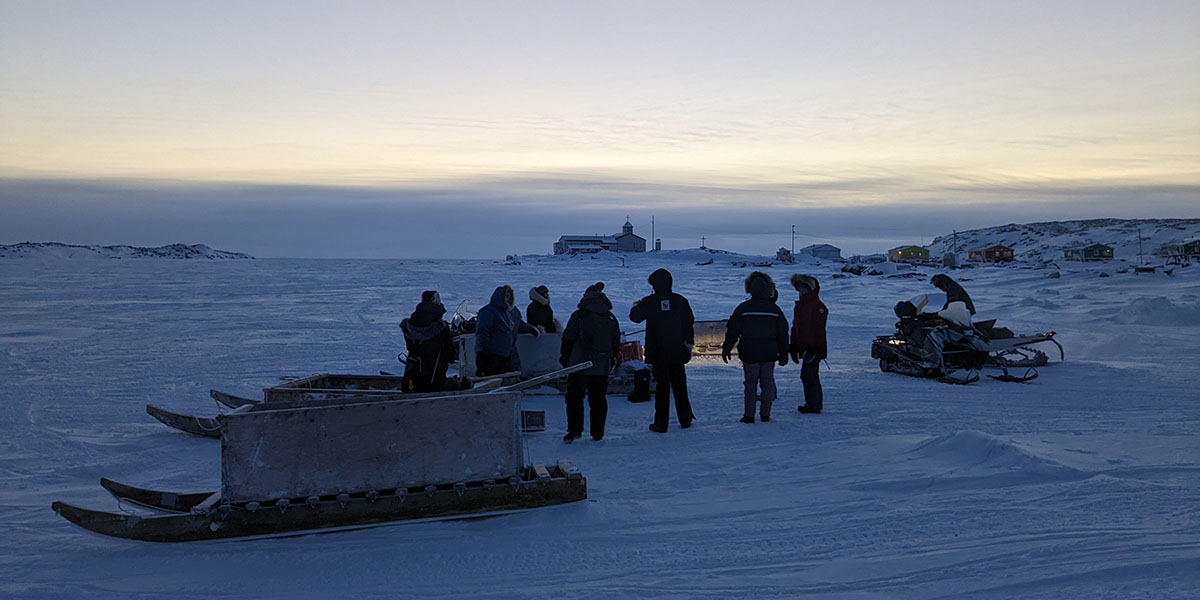
WWF-Canada and SPI teams get ready for a snowmobile trip led by Jimmy Ullikatalik, manager of the Taloyoak Umarulirijigut Association, and the Aviqtuuq Guardians. (Photo credit: Talha Awan, Smart Prosperity Institute)
“There is a lot of potential for tourism — we just need support to start it off.”
Nunavut’s natural landscapes and unique biodiversity support a tourism industry that is valued at $96 million (2018). In Taloyoak, tourism activities like wildlife viewing, birding, and recreational hunting and fishing could be bolstered by investments in existing and additional tourism facilities (e.g., wilderness cabins and tourism center).
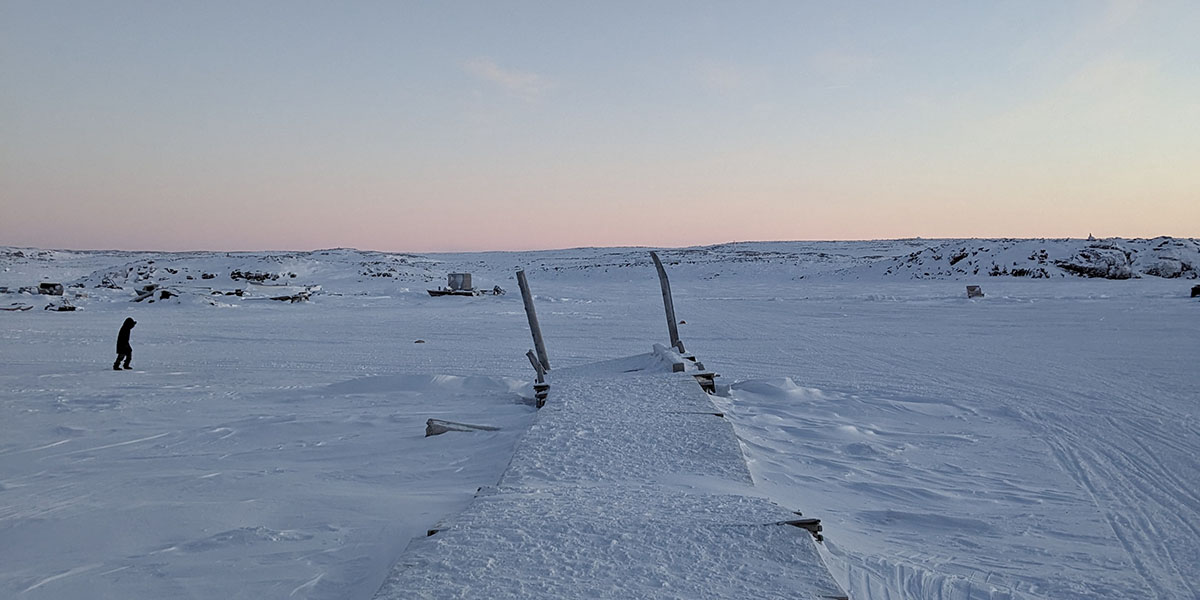
A community member walks on the frozen harbor of Taloyoak. (Photo credit: Talha Awan, Smart Prosperity Institute)
The blue conservation economy is a community development model that can improve the quality of life for coastal Inuit communities in Nunavut, and protect and leverage traditional knowledge, languages, and lifestyle. Taloyoak’s conservation economy — discussed in our upcoming report, Conservation Economies in Nunavut: Aviqtuuq Case Study — is just one example of this model that is being implemented by communities across Nunavut. Our second report, Inuit-led Economic Development: An Overview of Nunavut’s Blue Conservation Economy highlights other examples of Nunavut communities finding success with a conservation-economy model.